All of this is possible, though some things (i.e beings from other dimensions) are only going to show up if you have taken a very high dosage of something trippy.
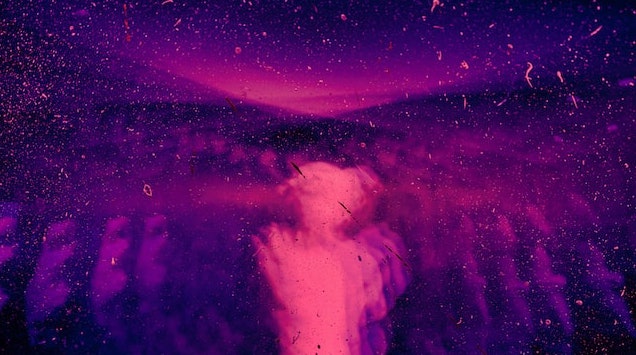
In fact, psychedelic drugs are often referred to as hallucinogens. This is because they come under the banner of substances that alter consciousness and perception. However, psychedelics are not the only examples — dissociatives and deliriants are also categorized as hallucinogens. .
Additionally, hallucinations can have other causes, such as psychological or physical conditions unrelated to drug intake.
But what actually are hallucinations? And what causes people to see them? Did you know there are different kinds?
You didn’t?!
Well, no worries. Many people don’t. It seems we’ve taken for granted a phenomenon which, if you think about it, is pretty wild. But, no more! We’re taking a deep dive into hallucinations, so next time you start seeing wacky visuals during a shroom trip, you’ll know what’s up.
What Are Hallucinations?
Hallucinations are changes in your sensory perception, caused by over-active areas of the brain. They can effect all five senses, and come in many different forms.

What Causes Hallucinations?
Hallucinations can have many causes. Apart from psychedelic drugs — which we’ll get to later — they can occur naturally, for various different neurological reasons.
Firsty, our daily (and nightly) journeys to and from sleep are a common cause of hallucinations. Hypnagogic hallucinations occur as you are falling asleep. Hypnopompic hallucinations occur as you are starting to wake up. Both can cause realistic hallucinations that can be very confusing and frightening to the one having them. However, apart from momentary discomfort, these kinds of hallucinations are not cause for concern.
Secondly, hallucinations can also be caused by various diseases or mental health disorders. These include schizophrenia, Parkinson’s disease, Alzheimers, Charles Bonnet syndrome, and migraines.
Research has found those with mental health conditions that experience hallucinations have an overactive visual or auditory cortex. This has led to theories that hallucinations can be caused by disruptions to the relationship between the brain’s frontal lobe and sensory cortex. For example, in the case of someone with schizophrenia, they may have an overactive auditory cortex, causing them to hear sounds that are not there.
We hallucinate every day
Imagine walking down the same street every day. The brain gets comfortable, familiar with the surroundings. It anticipates the usual, like the red car parked on the corner. So, when you glance that way, it doesn’t bother to double-check. It simply tells you, “Red car ahead.”
But what if, one day, the car is blue? You might not notice at first because your brain assumes “red.” It fills in the gap in your perception. That’s the brain’s way of saying, “I’ve got this. No need to pay extra attention.”
This happens because our brains love efficiency. They take shortcuts based on what’s usually there. It’s a helpful habit, but it can make us miss the extraordinary in the everyday.
Why Do Psychedelic Drugs Cause Hallucinations?
Well, the complete answer to that we’re afraid is still a big, glowing, fractal question mark. Scientists do have some ideas though. Psychedelic drugs alter the communication between the frontal lobe, sensory cortex and hippocampus — however, in this case it is only temporary. This disruption can lead to the processing of sounds and images that might generally be inhibited.
Here’s the deal: Hallucinogens are emotion amplifiers.
They crank up your feelings, and this heightened emotional state can cause your imagination to mix with your sensory perceptions. You see, your brain is bombarded with an overwhelming amount of information from the world around you, way more than it can handle. So, to make sense of it all, it filters out what’s not absolutely necessary and fills in the gaps, based on learned patterns about reality. When the systems your brain uses to take these shortcuts are altered, by a heightened emotional state, or by ingesting psychedelic drugs that alter brain chemistry, the result is a very different sense of awareness and perception, as your brain tries to make sense of the raw sensory input without the usual filtering process. We experience this as brighter colors, sensitivity to sounds and music, and a heightened depth of emotion and thought, as well as a myriad of other interesting effects.
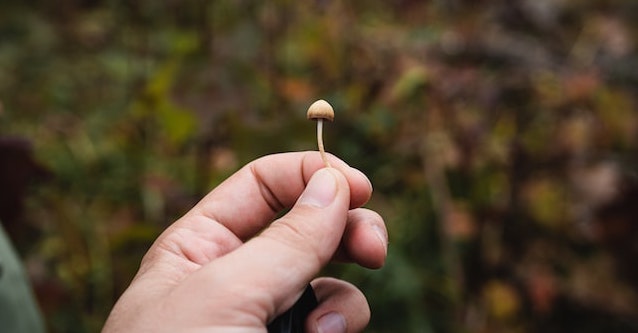
Which Psychedelic Drugs Cause Hallucinations?
Psychedelics are sometimes known as Classical Hallucinogens. The most commonly used are:
- Psilocybin (from magic mushrooms and truffles)
- LSD
- Mescaline (from peyote)
- DMT (or ayahuasca containing DMT)
Dissociative hallucinogens include ketamine, PCP, ibogaine, and nitrous oxide.
What Are Common Psychedelic Hallucinations?
Everyone who’s ever tripped and hallucinated will have had a different journey. However, there are some visuals and experiences that reoccur very frequently. Frequently enough for us to call them ‘common’ at least — and we’ve done the Reddit thread research to back it up!
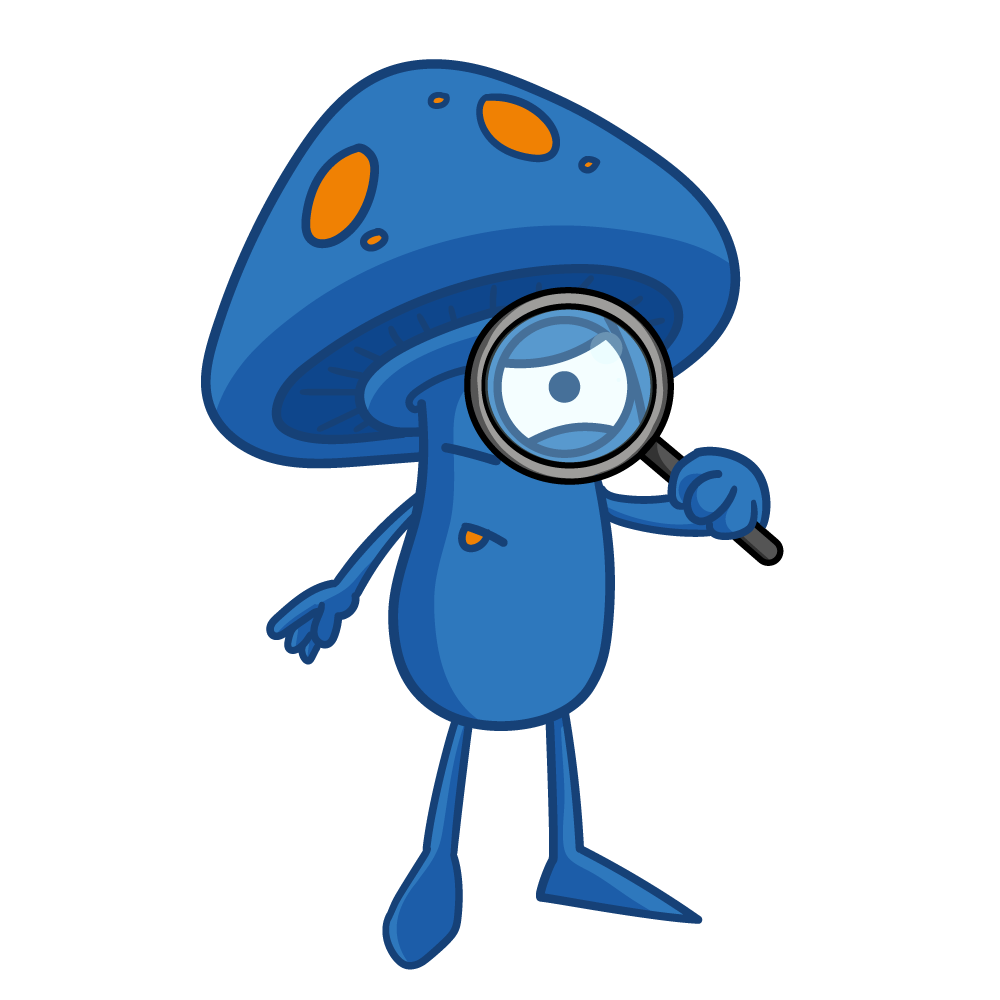
Fractals
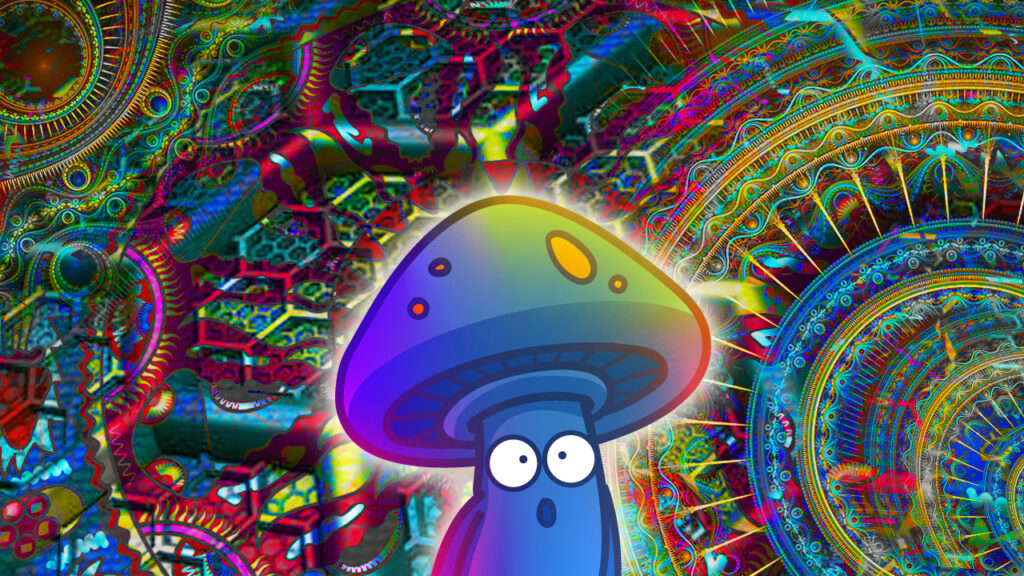
Fractals are a pretty dependable part of psychedelic trips. You may have experienced them sober, perhaps in a dark room, or when you’ve scrunched your eyes shut. They are the groovy geometric patterns that unwind before your eyes. The Fractal Foundation describes them best (as you’d expect!):
“A fractal is a never-ending pattern. Fractals are infinitely complex patterns that are self-similar across different scales. They are created by repeating a simple process over and over in an ongoing feedback loop… Fractal patterns are extremely familiar, since nature is full of fractals. For instance: trees, rivers, coastlines, mountains, clouds, seashells, hurricanes, etc. Abstract fractals – such as the Mandelbrot Set – can be generated by a computer calculating a simple equation over and over.”
And ever the oracle, over on Reddit a user shares;
“Reality is just billions of meshed fractals. Psychedelics show us these patterns. Simplest explanation I can offer.” — u/seventener
Strange Creatures
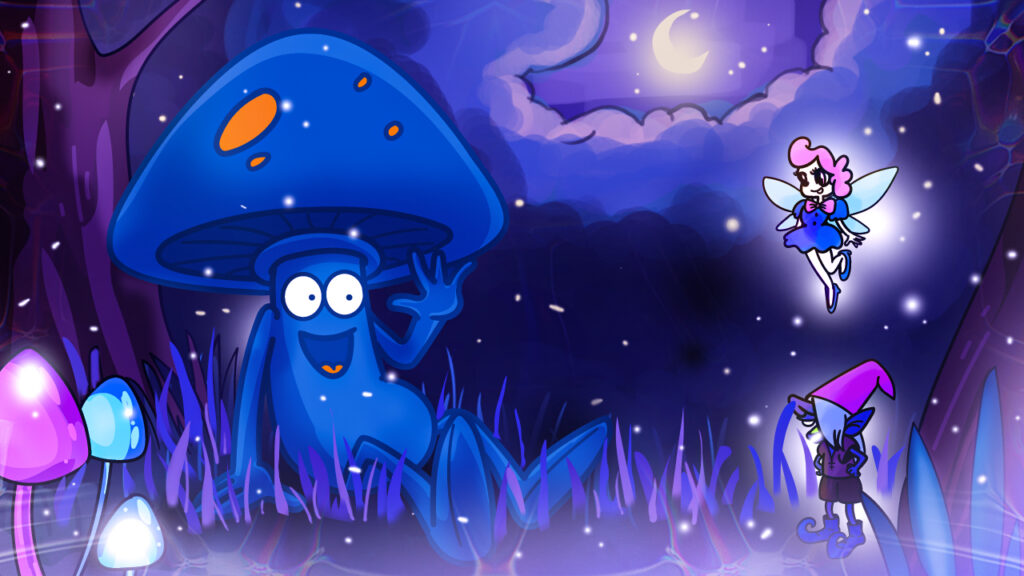
Much rarer than fractals, some users experience seeing bizarre creatures when tripping on psychedelics. Most famous are the ‘machine elves’ and goblin-like folk that many (including Terence McKenna) have claimed to see while tripping on DMT. On the topic, Reddit user u/Dipsause223 says:
“They jump inside your body and tinker around. They twist your knobs and grease your gears. They fix the things deep inside you that you yourself do not have access to. But the whole time they ARE you, and you are me, and we are them and they are us.”
Many psychedelic users report the presence of some kind of being, almost always benevolent, that can sometimes speak in strange languages, and sometimes communicate completely non verbally.
These beings can be non physical, only existing as a sense of presence and energy. These experiences are usually reserved for trippers who take on very high doses, or extremely potent substances such as DMT.
Talking to Trees
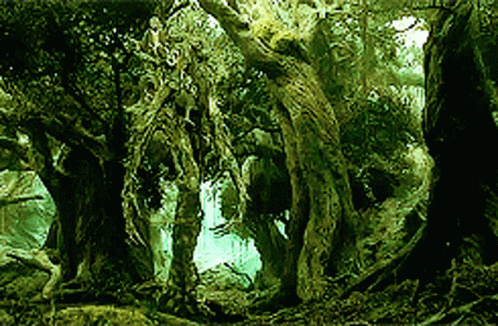
Another more common psychedelic hallucination is talking to trees and plants. Some say that magic mushrooms are most effective at fostering this experience because they are of nature too.
During a psychedelic experience, our senses often become finely tuned, akin to a radio tuning into different frequencies. We become exceptionally attuned to the subtlest vibrations, including those emitted by plants. Just as we communicate through words, plants and all life forms transmit information via vibrational frequencies, and communicate with each other through mycelial networks and other ways we are only beginning to understand.
In an altered state of consciousness, we may perceive the intricate, melodious hum of the plant kingdom’s language—a silent symphony of life. Our emotional sensitivity soars, allowing us to pick up on the nuanced emotional states of plants. It’s a dance of connection where we tap into the wisdom of nature, experiencing a profound dialogue that transcends spoken language.
Reddit user u/Beneficial_Seat4913 shares a tree tale;
“…I sat there and spoke to this tree, like I said things in my mind and it answered. Not in a voice but more, feelings. Vibes, you know? We had a whole conversation like that. Completely silent bar me going “yeah” outloud for my own sake.”
Mysterious Mirrors
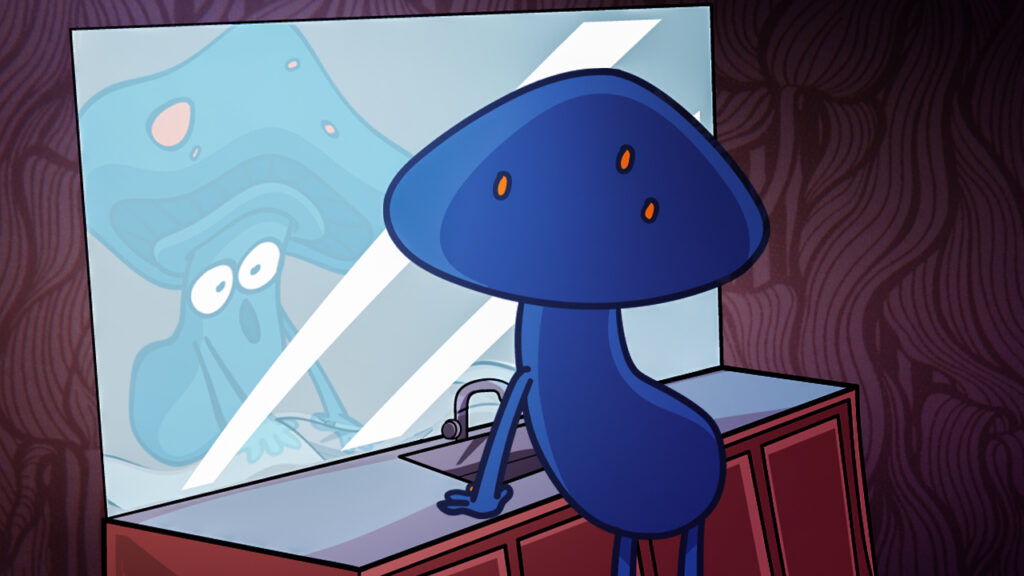
Many people warn that you should not look in the mirror while you are tripping, as your face may appear strange to you. However, there are just as many who say it can be a pretty transcendental experience. It’s up to you!
Reddit user u/EskimosGod writes:
“The trick isn’t just to look at yourself, but to stare deep into your pupils. It doesn’t really have to be your pupils but it’s the best place to start. Your eyes can start to lose focus and the objects in the mirror will start to float/melt and you’ll hallucinate things in the mirror dimension for as long as you maintain the state of non focused eyes.
It helps to kinda ignore the fact you’re looking at yourself, but using the mirror as a visual tool to induce hallucinations. By far the craziest hallucinations I’ve ever had while tripping have been from mirrors. It might just not be your thing, but some people just look at themselves and move on and never experience the true mirror dimension lol.”
Space, the Final Frontier
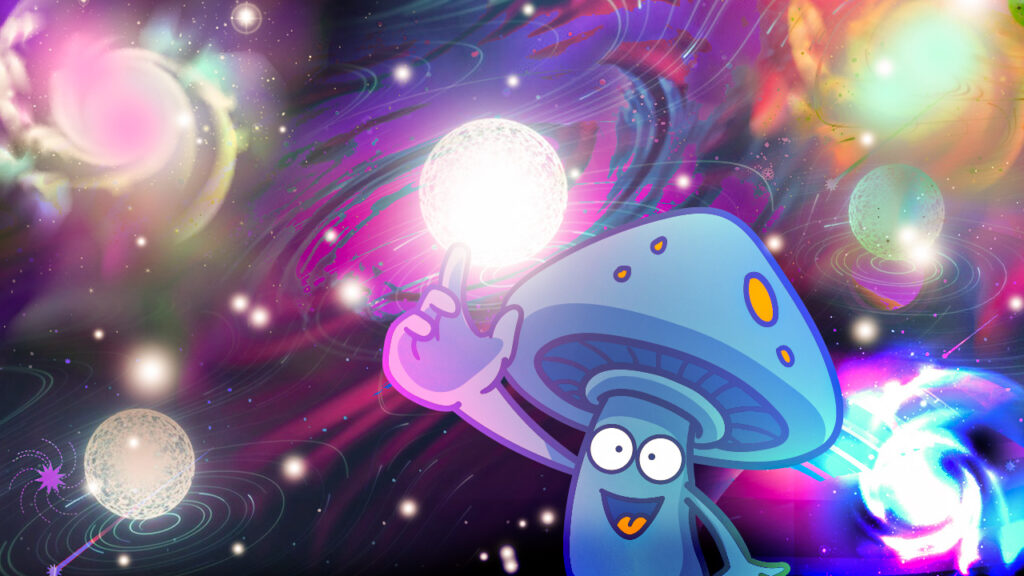
Visions of the cosmos are also oft-cited as a visual during a trip. Seemingly more common on LSD, they have the user exploring galaxies far, far away. Reddit user u/Tri-Hard_Cx7327 shares;
“Literally couple nights ago I was in my room, closed my eyes, was flying through space saw the most random s*** ever while there were stars around me…”
Wander Safely
So there you have it — Hallucinations 101.
Did you know that the word hallucination stems from a Latin term meaning ‘to wander the mind’?
Well, get wandering, wanderer!

For advice on how to trip on magic mushrooms safely check out our guide. And remember, always be sensible and safe when exploring psychedelics.





